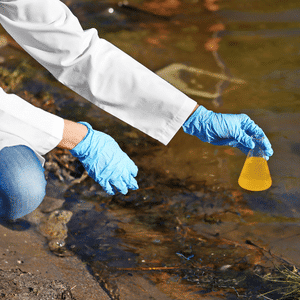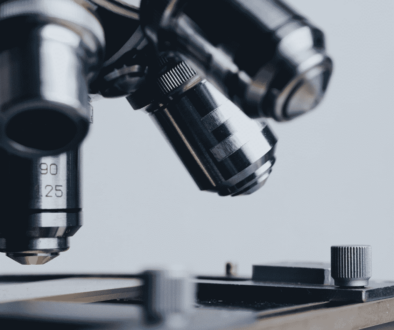Environmental labs: How they can protect and improve the environment
Environmental pollution is a global problem that affects human and animal health and the ecosystem. Environmental laboratories have been established to address this challenge. These labs work to protect and improve the environment byanalyzing environmental samples and collecting data to identify pollution and take countermeasures. In this blog post, we’ll take a closer look at the role of ecological labs in protecting the environment and how [FP]-LIMS helps them fulfill their essential function.

What are environmental labs?

Environmental laboratories are specialized facilities dedicated to studying environmental samples and parameters. They measure and monitor environmental quality by collecting and analyzing data on air, water, soil, and waste samples.
These labs play an important role in detecting environmental pollution and identifying pollutants. They help ensure that companies and government agencies comply with their environmental regulations and help ensure compliance with environmental laws.
Additionally, environmental labs help develop and evaluate new technologies and products that can reduce environmental pollution. These laboratories are also indispensable in science to make sound statements on environmental issues.
Types of environmental labs
Environmental laboratories come in various shapes and sizes, specializing in different aspects of environmental research. Some labs monitor air, water, or soil quality, while others focus on analyzing toxins and heavy metals. Some labs also work with ecosystems and wildlife to study their impact on the environment. Others develop technologies to reduce pollution or generate energy from renewable sources. Overall, these different types of environmental laboratories help improve our understanding of our environment and develop solutions for its conservation.
Examples of environmental laboratories:
- Water analysis laboratories: These laboratories analyze the quality of water samples to ensure that they are safe for human consumption and the environment.
- Soil analysis laboratories: These laboratories analyze the composition of soil samples to determine soil quality and investigate potential environmental impacts.
- Air analysis laboratories: These laboratories analyze air quality to ensure that the air is safe for human and animal health.
- Oil analysis laboratories: These laboratories analyze oil samples to ensure they are suitable for use in machinery and vehicles and to prevent environmental pollution.
- Biological analysis laboratories: these laboratories analyze the effects of pollutants on the environment by observing changes in animal and plant life.
- Waste analysis laboratories: these laboratories analyze waste samples to ensure that they can be disposed of safely and to minimize potential environmental impacts.
- Chemical analysis laboratories: These labs analyze chemical compounds to ensure they are safe for human use and the environment.
- Radiological analysis laboratories: These laboratories analyze radioactive materials to ensure they are safe to handle and dispose of and to minimize potential environmental impacts.
Why are environmental labs that important?
Environmental laboratories analyze soil, water, air, and other environmental samples to determine what contaminants are present and their concentrations. This information is critical to regulators, businesses, scientists, and the general public.
The primary goal of environmental laboratories is to monitor environmental quality and assess the impact of pollutants on the environment and human health. Some of the pollutants studied by these laboratories are chemicals, dioxins, pesticides, heavy metals, and other hazardous compounds. By testing these pollutants, regulatory agencies can take appropriate action to minimize the impact of pollution on human health.
Environmental laboratories also play an important role in developing pollution prevention strategies and evaluating the effectiveness of environmental cleanup efforts. They also provide valuable data for research and developing new technologies that can help improve environmental quality.
How the LIMS by Fink & Partner supports environmental labs
A LIMS (Laboratory Information Management System) is an important component for work in environmental laboratories. It helps manage samples and their results, as well as data recording and analysis. By using LIMS, environmental laboratories can increase their efficiency and improve the accuracy of results.
[FP]-LIMS helps environmental laboratories manage their samples, including creating orders, assigning analyses, and tracking sample status. It also enables sample chain monitoring and sample processing time tracking, resulting in a faster turnaround time.
In addition, [FP]-LIMS helps ensure data integrity and security by providing a centralized database for sample and analysis results. It also enables tracking of changes and revisions to data and report generation. In addition, it assists with quality assurance and control by enabling the use of standard procedures and methods. It can also help identify and fix problems by automatically detecting and reporting exceptions and deviations.
Overall, [FP]-LIMS is a factor that should not be underestimated for working more effectively and efficiently by facilitating the management of samples and data and improving the quality of results.


